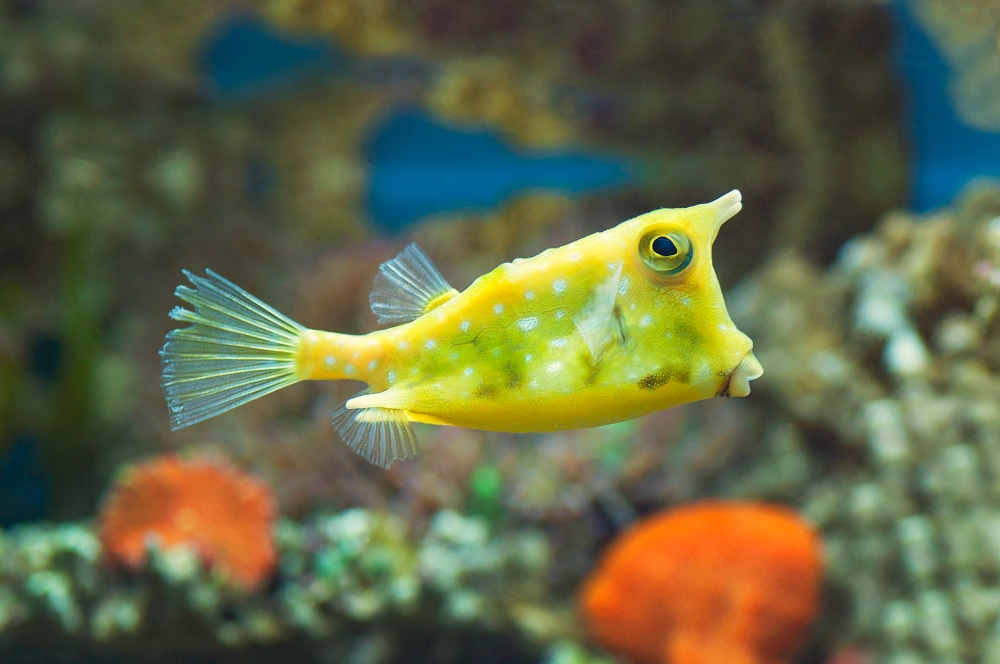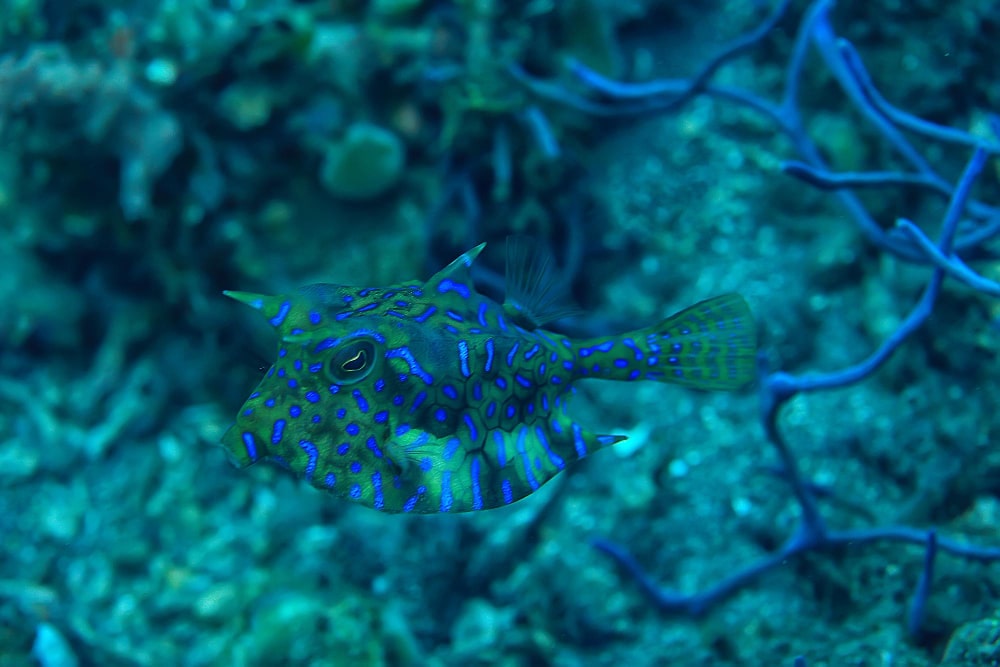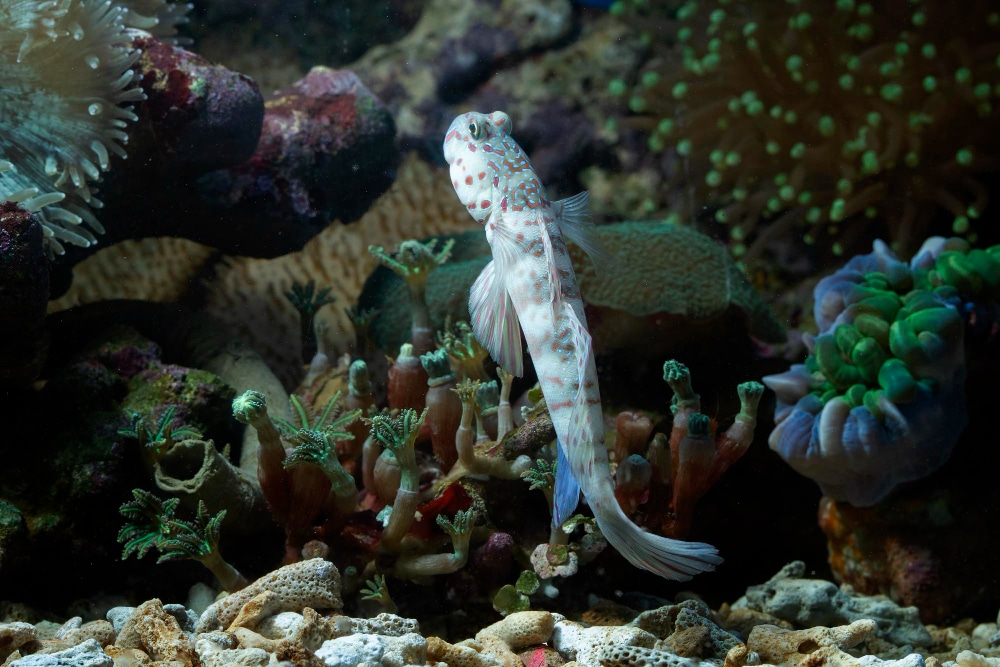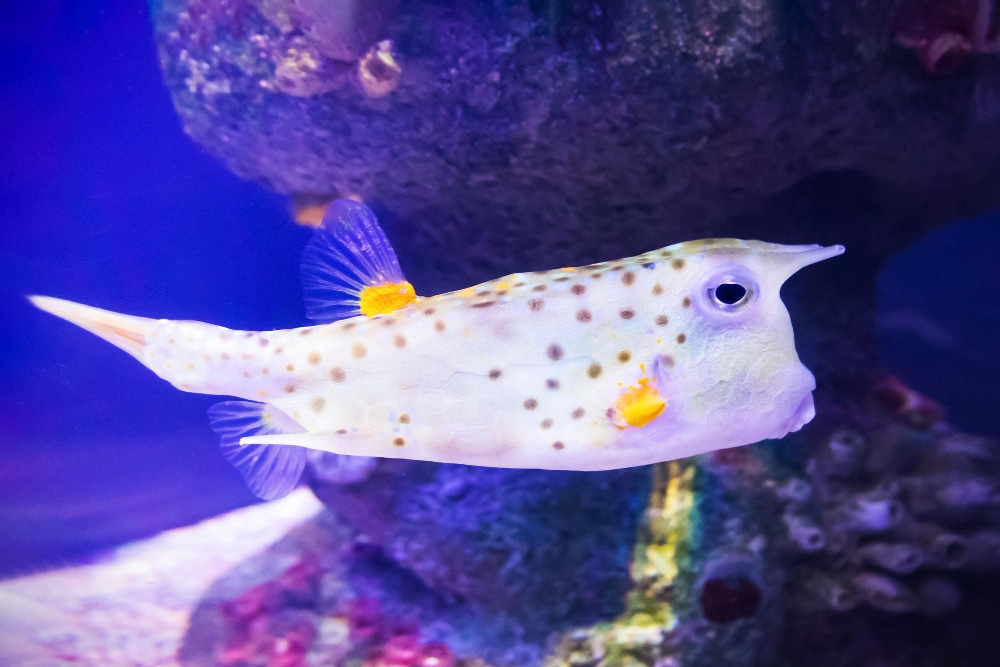Chalice Coral: A Comprehensive Guide for Beginners
Corals are not just beautiful creatures that add color to an underwater world, but they also play a vital role...
Jim Sabellico
August 5, 2022

Expert
Peaceful
Omnivore
Yellow boxfish, horned boxfish
Ostraciidae
72 - 78℉ (22 - 25.5℃), dKH 8 - 12, pH 8.1 - 8.4, sg 1.020 - 1.025
If you are looking for an interesting fish to add to your tank, then the longhorn cowfish might be a perfect choice. These unique fish come in a wide range of colors and can grow up to 12 inches in length. If you are considering caring for a Longhorn Cowfish, it is important to understand their needs.
This comprehensive guide will provide you with all the information you need to make sure your Longhorn Cowfish thrives in its new home. From diet to tank size, we will cover everything! Keep reading to learn more.
The longhorn cowfish (Lactoria cornuta) is a tropical marine fish that is found in the Indo-Pacific region. They inhabit coral reefs and can be found at depths of up to 100 meters. These fish are relatively uncommon in the aquarium trade but have become increasingly popular in recent years.
The longhorn cowfish has a rather unique appearance, they have a box-shaped body with a long horn protruding from the top of its head. This horn is used for defense, as it makes the fish look larger to predators.

The body of the longhorn cowfish is a light brown or tan color, with darker brown spots scattered throughout. Its belly is white, and it has two black stripes running down its sides. The most common hue of a longhorn cowfish is green, although they can also be found in light orange and yellow.
As with most fish, the cost of a longhorn cowfish will vary depending on a number of factors, including its size, age, and overall health. The longhorn cowfish is a relatively uncommon fish in the aquarium trade, which can make them somewhat costly. A juvenile longhorn cowfish will typically cost between $39.99, $79.99, and $147, while an adult fish can cost upwards of $200.
Many people enjoy keeping fish as pets in their reef tanks. If you are thinking about adding a longhorn cowfish to your tank, you may be wondering what the recommended tank size is. With so many different sizes and shapes of tanks on the market, it can be difficult to decide which one is best for your needs.
Longhorn cowfish are beautiful and unique fish that make a great addition to any aquarium. However, because of their size and activity level, they need plenty of room to swim and explore. A tank size of at least 100 gallons is recommended for a single longhorn cowfish.
If you plan on keeping more than one fish, you’ll need an even larger tank. This fish is also known to be highly adaptable and can adapt to different aquarium environments quite easily.
Longhorn cowfish are omnivorous and will eat a wide variety of foods. In the wild, their diet consists of small invertebrates, such as shrimp, crabs, and worms. They will also consume algae and other plant matter.
In captivity, longhorn cowfish should be given a varied diet to ensure they are getting all the nutrients they need. A good quality pellet food or flake food can be used as a base diet, and should be supplemented with live foods, such as the following:
It is also important to offer them plenty of vegetables, such as chopped spinach, zucchini, and broccoli. These vegetables can be blanched or steamed to make them easier for the fish to eat.
Longhorn cowfish are known to be finicky eaters, so it is important to offer them a variety of foods to ensure they are getting the nutrition they need.
It is best to feed longhorn cowfish twice a day. You can give them small pellets or flakes of fish food, as well as live or frozen foods like brine shrimp or krill.
It is important to offer a variety of foods to ensure that they are getting all the nutrients they need. Feeding them twice a day will help keep them healthy and happy!

Tank mates are a vital part of the fish-keeping experience. They provide a sense of community and can also help to keep the tank clean. When choosing a tank mate for your Longhorn Cowfish, make sure to take into account their size and diet.
Here are a few of the best tankmates for Longhorn Cowfish:
By choosing appropriate tank mates, you can help to create a healthy and thriving environment for your Longhorn Cowfish.
The lifespan of a longhorn cowfish is typically between five and ten years. However, there have been reports of them living up to 15 years in captivity.
To help ensure your longhorn cowfish has a long and healthy life, it is important to provide them with proper care. This includes maintaining a clean tank, offering a varied diet, and choosing appropriate tank mates.
By following these care tips, you can help your longhorn cowfish live a long and happy life!

We get a lot of questions about longhorn cowfish, so we’ve compiled a list of the most frequently asked questions to help you care for your fish.
Cowfish can be hard to keep because they are very particular about their water conditions. They need a pH of 8.0-8.4 and a water hardness of 10-15 dGH. They also need a lot of live rock for grazing, so they are not recommended for beginner aquarists.
Longhorn cowfish are generally considered reef safe, as they feed primarily on algae and small invertebrates. However, it is worth noting that they have been known to nibble on coral polyps and can become aggressive towards other tank mates if not fed enough.
So, if you’re considering adding a longhorn cowfish to your reef tank, make sure to do your research and be prepared to provide them with plenty of food.
We hope this care guide has been helpful. If you have any questions or comments, please feel free to share them with us. You can also follow us on Instagram for daily updates!
Comprehensive Care Guide for Fairy Wrasse
Care Guide for Diamond Goby: Everything You Need to Know
How to Prepare Your Reef Tank Before Leaving on Vacation

I am the founder of J. Louis, a digital marketing agency focused on providing innovative solutions and strategies built on a foundation of creative design and technology. A family man who loves travel and reef tanks, I’ve been coined as a jack of all trades, master of a few of them, most specifically website and sales funnel design, monetization and growth strategies, and viral marketing. I began pursuing my passions for business by cutting my neighbor’s lawns when I was just 8 years old and never looked back. Over the past 20 years, I have amassed significant experience providing consulting, design and development services for Fortune 500 companies, government, retail, private individuals, and A-list celebrities.
Corals are not just beautiful creatures that add color to an underwater world, but they also play a vital role...
As we move into the new year, it's time to start thinking about what reef tank LED lighting kits will...

Proceeds from all purchases go directly to Great Barrier Reef Foundation and supporting their mission.
Want to stay connected with all the latest news in the Reef Tank Addict community? Drop your email below!
Proudly Supporting The Great Barrier Reef Foundation
Copyright © 2023. All rights reserved.